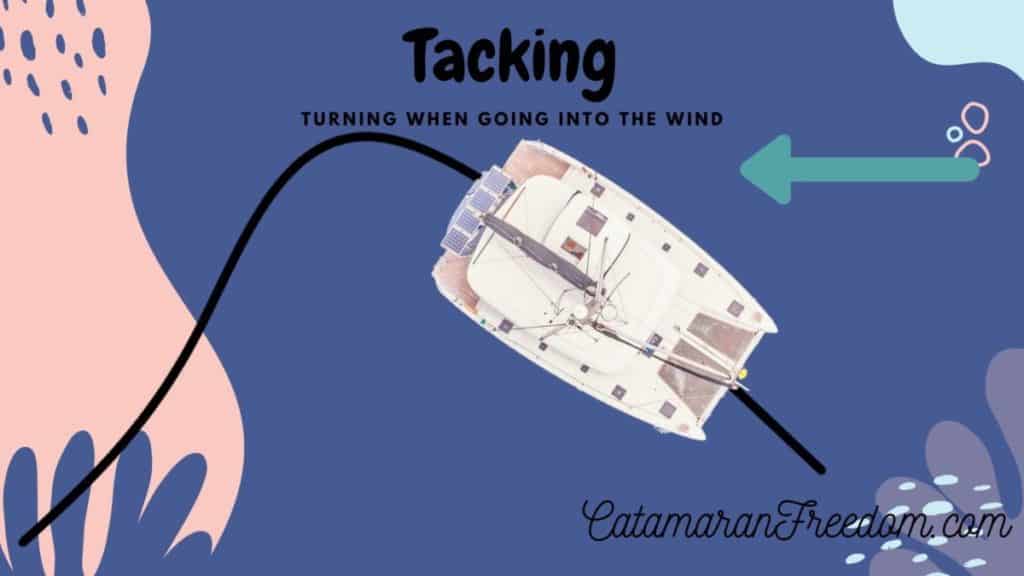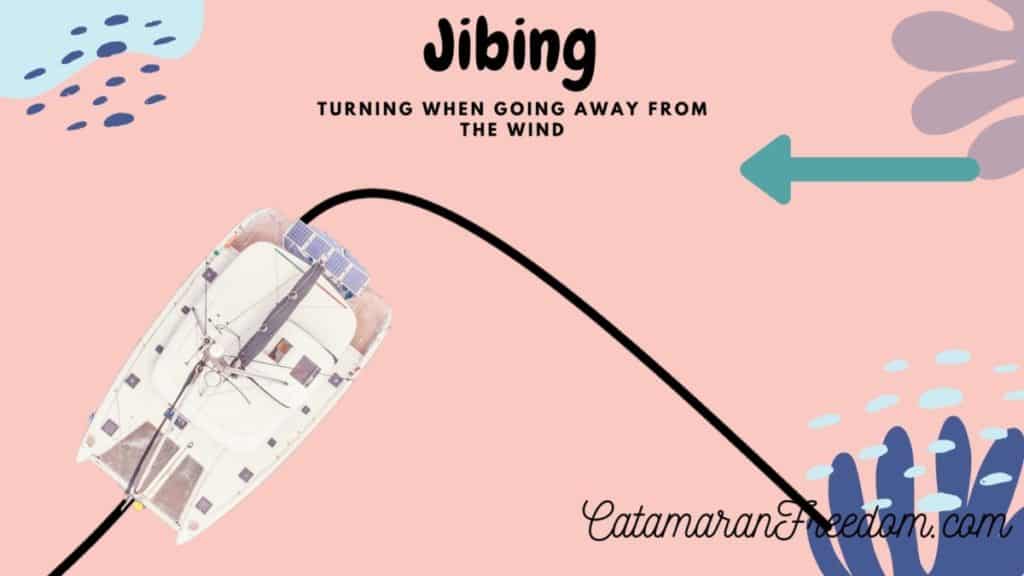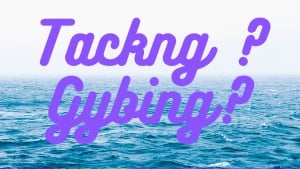As an Amazon Associate, we earn from qualifying purchases. We may also earn commissions if you purchase products from other retailers after clicking on a link from our site.
When starting my sailing career, the first thing that struck me was the amount of weird words that I was introduced to. Tacking and jibing are two of them! In this article, I Will explain the difference and what you need to know!
When sailing, the main difference between tacking and jibing is from what direction the wind hits your sails when you want to turn the boat. When tacking, the wind is blowing towards the bow (front), and when jibing, the wind is coming from the stern (back) of the boat. (Pictures below)
Tacking

Having the wind on the nose (or bow in boatology) of the boat is called heading upwind or going into the wind. This might seem impossible until you understand that the sails work in the same way as an airplane wing. This means that as long as the air is flowing around the sail, the boat will acquire a forward thrust.
The caveat is that since the sail is not a fixed shape( in contrast to airplanes) if you head directly into the wind, the sails will start flopping. When that happens, the sail loses its form and, therefore, also loses its aerodynamic function.
So what if you want to go to a place that is directly into the wind?
This is when you would have to zig-zag your way towards the goal. Every time you change direction, and you have the wind on your bows, you are making a tack!
This zig-zag pattern increases the distance you have to travel by 3-4 times and usually is a rougher ride than if you are going downwind.
Jibing

If, instead, you are going away from the wind and need to make a turn, then the same zig-zag movement is called a jib (or gybe).
On a catamaran, this is the preferred way of travel since it offers speed and comfortability. On a monohull, it tends to be a more rolly situation.
Read why circumnavigators travel with the wind in their back!
You probably have seen the old Viking ships with huge flat sails pointed forward. These guys were sailing straight downwind. In contrast to heading straight into the wind (which we have discussed is impossible with a sail), sailing straight of the wind is achievable.
A difference in comfort
Instead of using the sails as an airplane wing, it, just as the old Viking ships, uses the wind to fill the sails and then push the boat forward.
This pushing motion makes for the different sensations of the boat mentioned above. Although monohulls do not heel over as much as when going into the wind, it will roll from side to side, and many find this to be a significant contributor to seasickness.
A difference in speed
It might sound counter-intuitive, but once we understand how to utilize the sails as an airplane wing instead of a big bag that catches air, it makes sense that heading into the wind is actually a faster way to travel.
This is why the fastest circumnavigations have been done going east instead of heading west, as most cruisers would do.
Read more on how to circumnavigate the world
Differences between catamarans and monohulls going downwind
Compared to a monohull, the catamaran with its two hulls will remain more stable going downwind. Heading into the wind, the catamaran will usually not be able to go as close to “straight into the wind” as a monohull. This means it will have to travel a longer distance to reach the same destination.
This might make you think that a monohull is going to be faster when heading into the wind, some monohulls could be, but since the catamarans are usually much faster, they will reach the finish line more quickly even though traveling a further distance.

